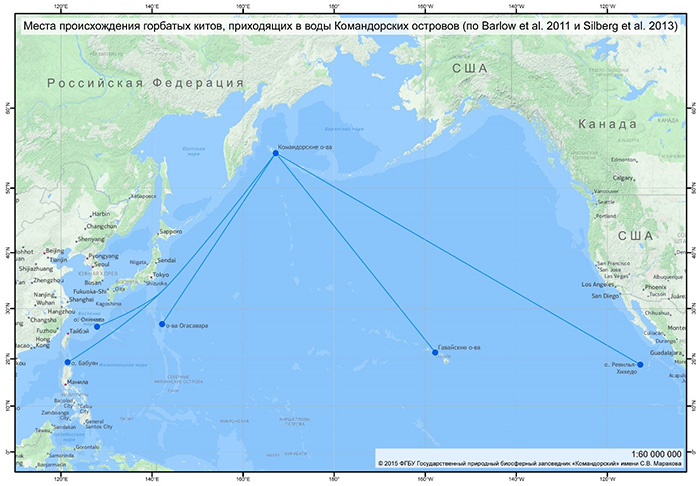The Humpback Whale Megaptera novaeangliae (Borowski, 1781)

The Humpback Whale. Photograph by Eugene Mamaev
The body length of adult animals is up to 19 m (14 m average), females are 1-1.5 m longer than males. The weight is up to 53 tons (30 tons average). Newborns are 5 m long, and may weigh up to 2 tons.
They live in every ocean - from the ice to the tropics in both hemispheres.
Their ration is varied and consists of small planktonic crustaceans and schooling species of fish, such as herring.
The normal duration of immersion is 3-9 min (can also reach 45 min).
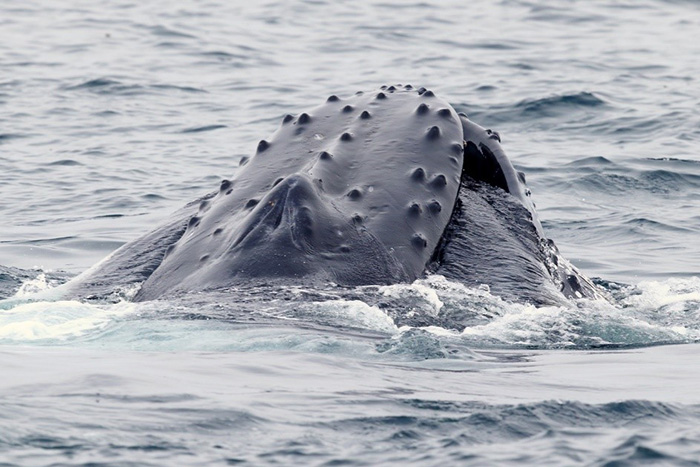
Humpback whales feed by filtering water through the "whalebone". Photograph by Eugene Mamaev
Fountain height is up to 3 m, during the immersion their tail can be seen above the water. Their characteristic features are: jumping out of the water and hitting water with the tail and pectoral fins. Every whale has its individual features of tail coloration that allows following life stories of individuals.
The humpback whale is a migrant species, and the length of migration way in one direction can be up to 8000 km.
Their life expectancy is over 50 years.
The world population is approximately 60 000 individuals, including the waters of the North Pacific– 25 000 individuals.
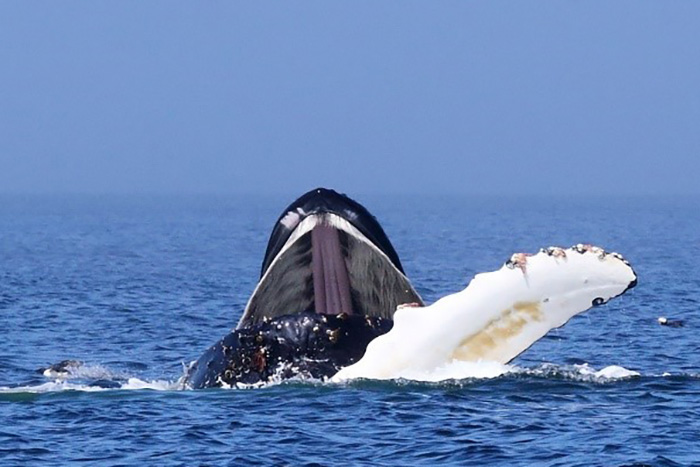
"Whalebone" – is a filtering apparatus of baleen whales, which consists of hundreds of baleen plates with fluffy fringe, hanging down from the upper jaw. Photograph by Eugene Mamaev
During the whaling times it was one of the main objects of prey. Nowadays it is one of the most popular objects for tourist observation all over the world. The humpback whale has this exceptional attraction due to its leaps. It is also called a “cheerful” whale for its passion to jump out of water. In Russia, humpback whales can be seen in the waters of the Commander Islands.
This species is listed in the IUCN Red List of Threatened Species, Russian Red Data Book and the Red Book of Kamchatka.
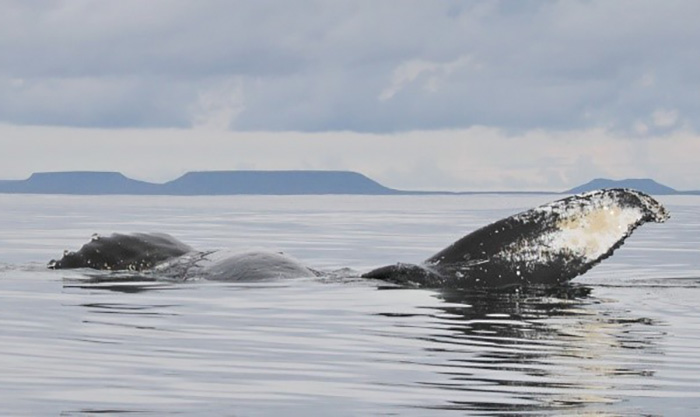
Humpback whales like resting on the water surface, turning from back to belly and showing the pectoral fins and the tail. Photograph by Eugene Mamaev
As a result of overhunting during the 40s of the last century it was a rare species. Nowadays it is a common inhabitant of the water area of the Commander islands. Since the 90s some of them have been found near the Commander shores, and since 2001 the number of humpback whales in the water area of the islands has started to grow steadily. According to the observation data in 2010 the total number of humpback whales in the waters of the Commander Islands was 1000 or more individuals. In 2011 the number was not that high but nevertheless, up to 150 individuals could be registered for one record.
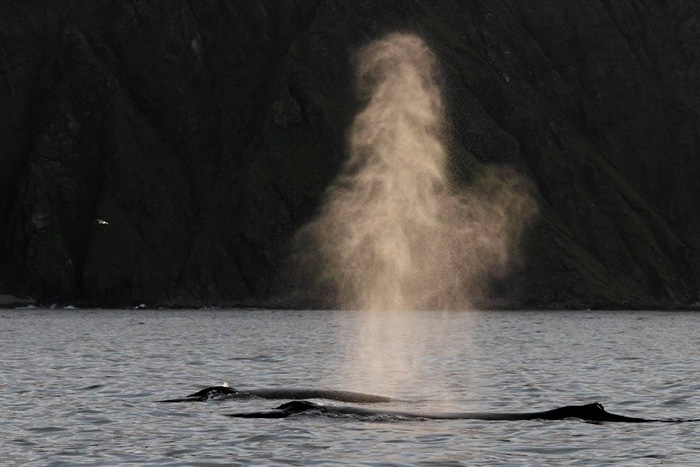
Humpback whales are often seen not alone, but in pairs or by three. For a short period of time they can form more numerous groups. Photograph by Eugene Mamaev
Humpback whales appear at the Commander Islands in late spring - early summer. But the largest number is observed in August and September. Winter migration lasts till the end of February. The main places of concentration of humpback whales are the waters of the west coast of Bering Island and the southern extremity of Medny Island. Female and male whales, single whales, and females with cubs feed here. Sometimes whales form clusters of up to a hundred or more individuals on a rather limited water area, so their fountains can be seen all round the horizon. Presumably more than 1000 whales come through the waters of the Commander Islands during the migration period. This is the most mass type of whales in the waters of the Commander Islands.
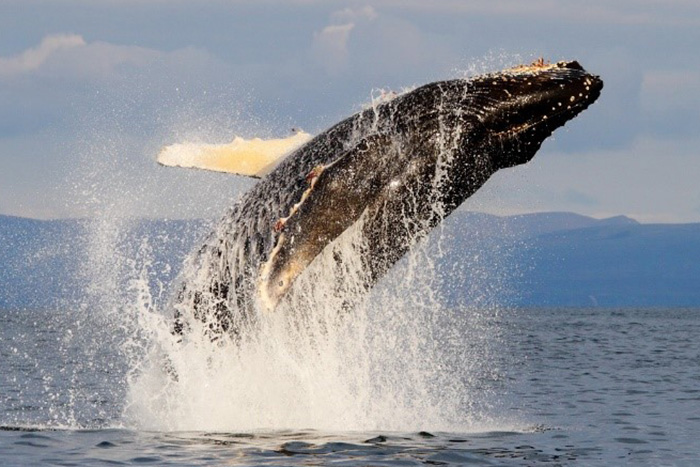
Humpback whales are well known for their break-neck leaps. Photograph by Eugene Mamaev
The migrations of humpback whales over the past decade have been adequately studied. It has been established that whales feed in the Commander waters, especially those coming from the shores of the Philippines, Japan, Hawaii and even the coast of Mexico. Thus, the distance from the Revillagigedo Islands near the coast of Mexico on the straight to the Commander Islands is 8000 km, and from the Babuyan Islands near the Philippines – 5700 km. It is likely that during their migration humpback whales travel over distance that is comparable with the distance travelled by well-known wanderers, gray whales.
Places of origin of humpback whales which come to the waters of the Commander Islands, according to the results of photographic identification (according to Barlow et al. 2011 and Silberg et al. 2013)









